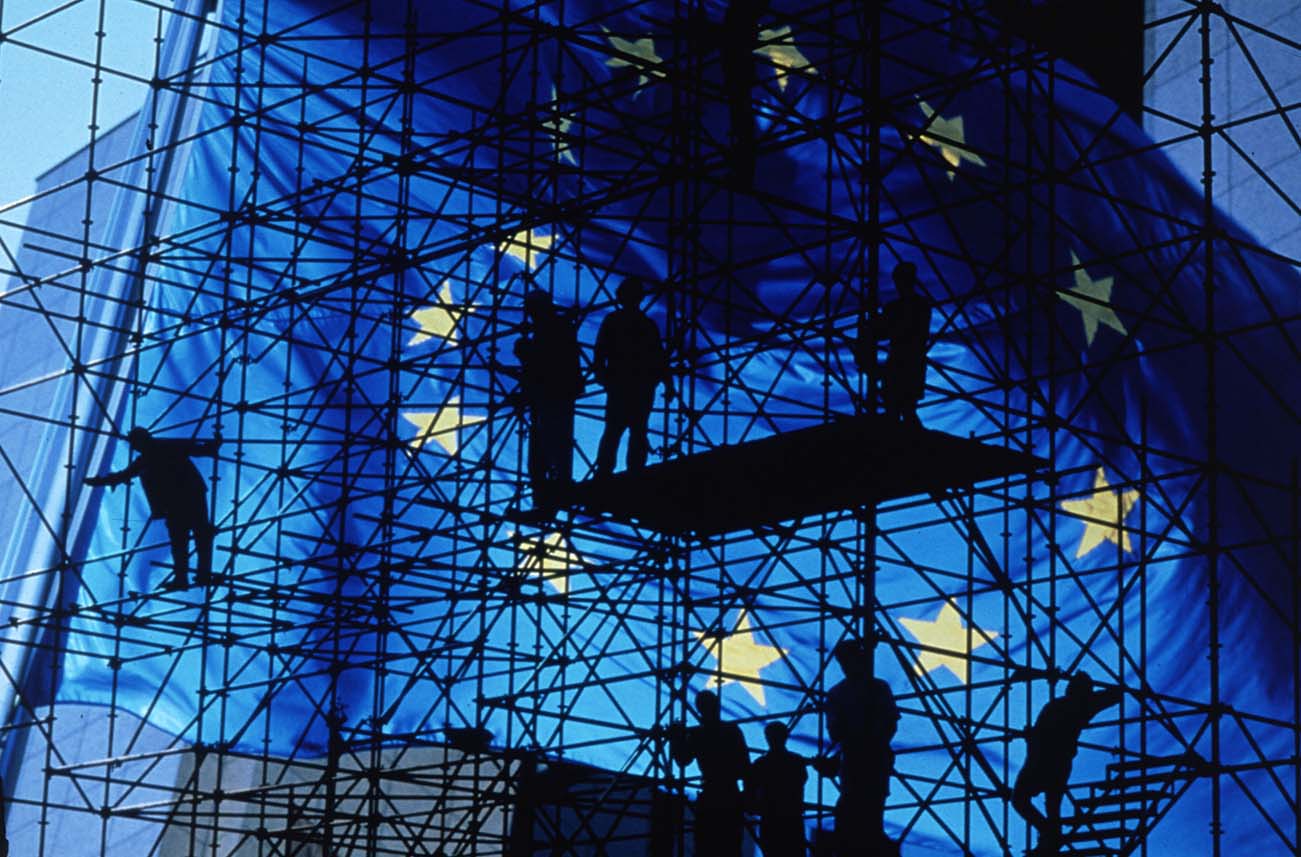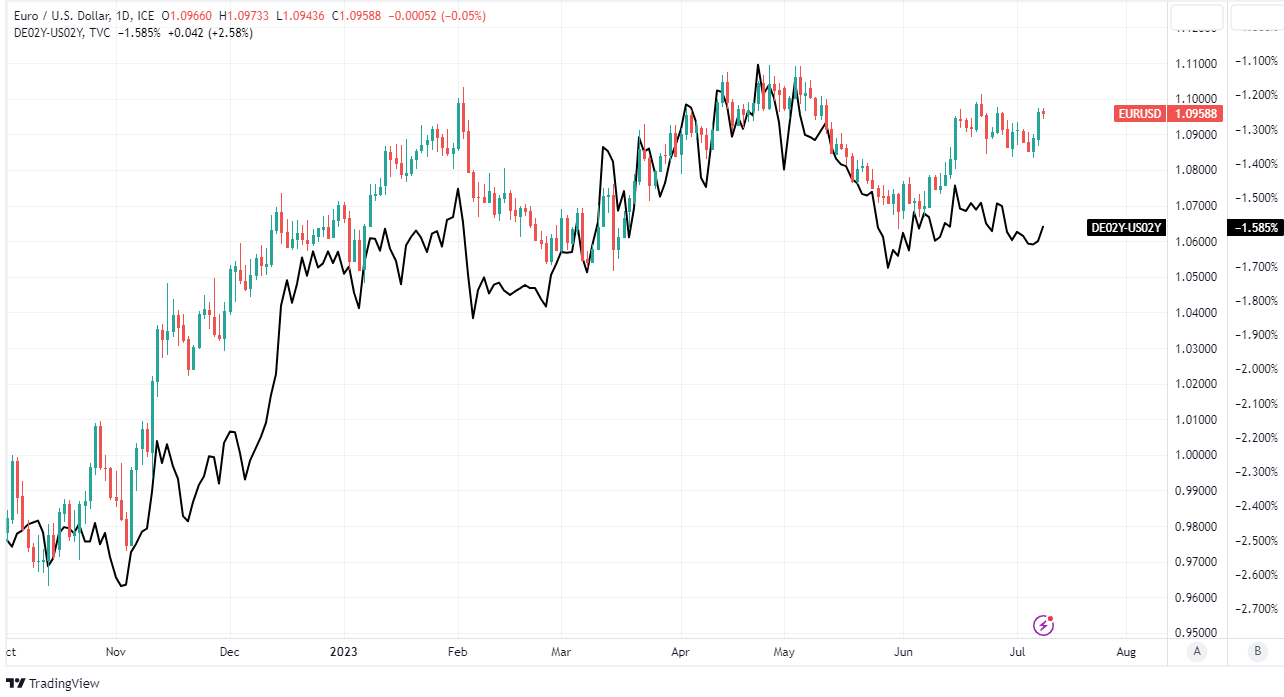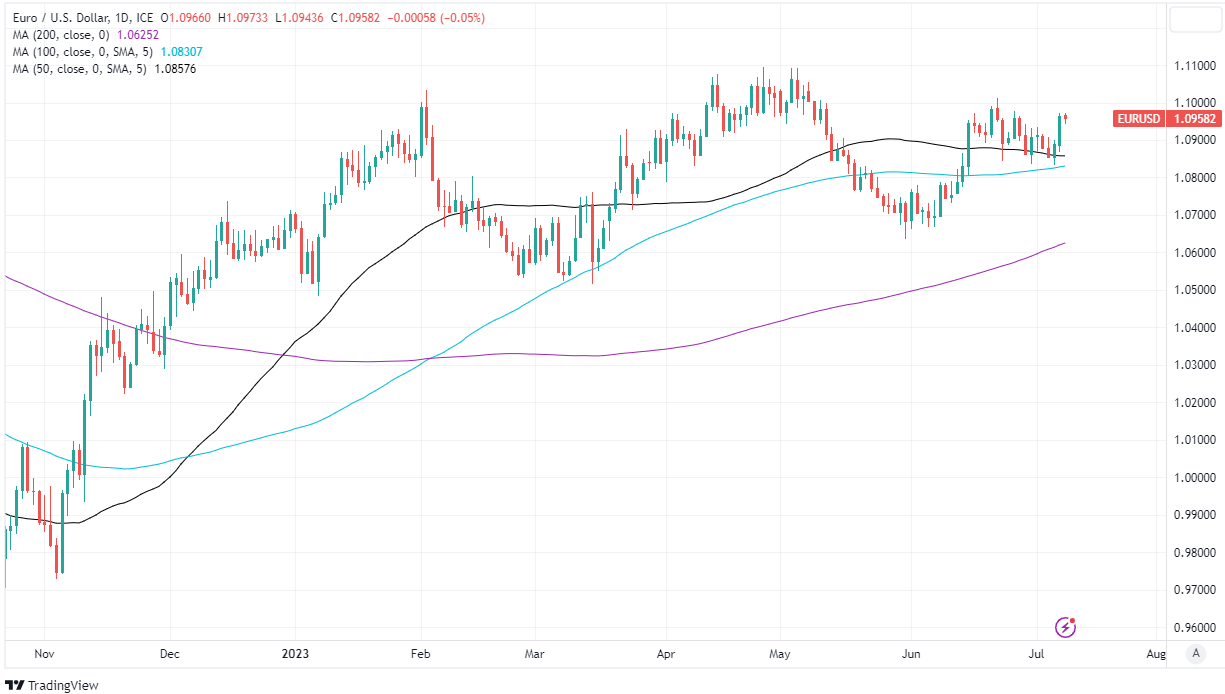EUR/USD Week Ahead Forecast: Surfing Capillaries Along Nearby Shoreline
"We probably need a 0.2% (preferably in the core) print to give EUR/USD a chance of getting back above 1.10 (and USD/JPY moving towards 140)" - Societe Generale.

Image © European Commission Audiovisual Services
The Euro to Dollar exchange rate has held most of last month's gains during recent trade but its rebound from late May lows has lost steam and the ebb of momentum might now be likely to leave single currency surfing diminishing capillary waves along the nearby shoreline of 1.08 in the days ahead.
Europe's single currency entered the new week near 1.10 against the Dollar after rallying on Friday when the U.S. reported its smallest monthly employment gain since December 2021 but the risk or even likelihood is of it handing back at least some of these gains over the coming days.
"Our short-term financial fair value model shows that EUR/USD should be trading around 1.0800 based on current conditions," says Francesco Pesole, an FX strategist at ING.
"We expect mostly USD-driven moves in EUR/USD this week, and see a greater risk of some pull-back towards 1.0800 rather than trading sustainably above 1.1000 – which could however be possible should US CPI surprise on the soft side," he adds.
With little by way of significant appointments in the European calendar, much likely depends for the Euro on whether the U.S. economy is able to achieve a tenth successive decline of inflation when data for the month of June is released on Wednesday.
Above: Euro to Dollar rate shown at daily intervals with spread or gap between German and U.S. government bond yields. Click image for closer inspection.
"I think that the downside risks are greater than upside and don’t expect any potential move north of 1.10 to hold in the short-term," says Fawad Razaqzada, a market analyst at City Index and Forex.com.
Economist surveys favour the above kind of outcome with inflation tipped to fall from 4% to 3.1% for the recent month but financial markets will likely be more interested in the core rate and its reflection of price pressures once food and energy items are removed from the consumer goods basket.
This is more closely monitored by the Federal Reserve but the potential trouble for the Euro is that the core rate has been much slower and more staggered in its descent from 2022's peaks than the overall pace of inflation so far with recent declines in the latter driven to a large extent by falls in food and energy costs.
Wednesday's core rate will be most influential when it comes to determining whether financial market pricing moves into better alignment with the Federal Reserve forecasts released last month and suggesting that interest rates might be likely to rise from 5.25% to 5.75% before year-end.
"We probably need a 0.2% (preferably in the core) print to give EUR/USD a chance of getting back above 1.10 (and USD/JPY moving towards 140)," says Kit Juckes, chief FX strategist at Societe Generale.
Above: Euro to Dollar rate shown at daily intervals with selected moving averages denoting possible areas of technical support for single currency.
Interest rate swap markets implied on Monday that U.S. rates are likely to peak around 5.5% near year-end but this could change if the core rate undershoots or overshoots an economist consensus currently looking for a 0.4% month-on-month increase in June to leave the annual pace of core inflation sitting at 5%.
Any inflation undershoot on Wednesday would likely be positive for the Euro-Dollar rate in the latter half of the week if recent market tendencies are any guide while an overshoot slipping back toward, or perhaps even below the collection of daily moving averages near the round number of 1.08.
But once beyond Wednesday, the single currency's attention is likely to turn to the release of minutes from the European Central Bank (ECB) monetary policy meeting in June, which is the highlight of the continental calendar this week.
"The European Central Bank’s July meeting minutes are likely to be hawkish. However, a hawkish stance from the ECB is not new news," says Carol Kong, an economist and currency strategist at Commonwealth Bank of Australia.
"A stronger US CPI this week can lift US interest rates and widen interest rate differentials further, weighing on EUR/USD. EUR/USD has downside support at 1.0727 (76.4% Fibbo), though that is unlikely to be tested this week," Kong and colleagues write in Monday market commentary.


